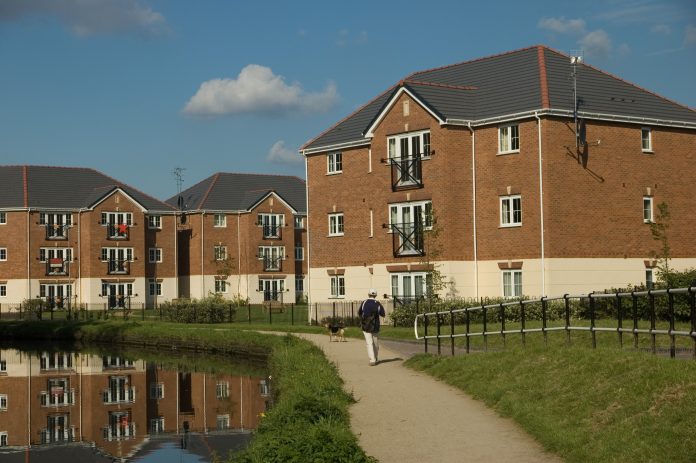Hugh Petter, director at Adam Architecture and Anthony McNamee, associate at Farrer & Co, explore how the UK can adopt a sustainable approach to placemaking
Homeownership prospects in the United Kingdom (UK) have never been more pessimistic. A recent report revealed that 87% of adults cannot get on the housing ladder, and even in cases where the homeownership dream becomes a reality, problems quickly arise. New-build homeowners have increasingly encountered problems, with 63% of UK adults worried about the quality of their homes and 45% dissatisfied with the snagging process, according to the Homeowners Alliance.
For an increasingly sophisticated population, expectations have changed and obtaining a housing unit is not enough. Now more than ever we are aware of our environmental impact and the importance of physical and mental wellbeing. The available product is failing to meet these common expectations and the UK now finds itself in a housing crisis of quality, where homes don’t reflect the changing society.
What’s going wrong?
In the last 100 years, there has been a tendency to answer housing demands by simply boosting supply. The government’s current policy of ushering a period of mass housing construction to deliver 300,000 new homes by the mid-2020s, is characterised by short-term, profit-first thinking, which has only exacerbated the housing problem. A slew of soulless and poorly designed new communities, appropriately described as ‘dormitory towns’, have now been generated. Simply providing a place to sleep before commuting into a city centre or neighbouring town.
At a macro-level, this housing crisis can only be resolved with time, thought and moving to a concept of socially responsible profit, which recognises the complexities of housing demand and good placemaking – to borrow a phrase – a “patient approach”. This approach to placemaking should address the community as a whole (potential renters and buyers) and prioritise quality and sustainability over quantity. The aim should be to produce economically, socially and environmentally sustainable places that go beyond meeting the need for a place to sleep.
How can this work?
To create great communities, taking a long-term view at the outset of projects is crucial. While this may require upfront costs and lower profits in the short-term, this deferred approach to financial returns will entail longer-term rewards as desirable communities are created.
While this type of placemaking used to be the preserve of the Landed Estates, pioneer places such as Poundbury have highlighted the benefits of adopting a patient approach. In 1988, many critics saw Poundbury as an expensive distraction, but it now supports over 4,500 people, and has produced 1,410 completed homes with 33% affordable housing. The development has, seen an increase of almost £98m per annum to Gross Value Added (GVA) to the local economy and established 1,600 full-time equivalent jobs. Poundbury is the perfect example of a socially responsible approach.
Evaluating success through a social and environmental lens is fundamental when considering great placemaking. In Derwenthorpe, where the average individual carbon footprint is one of the lowest in the country, environmental sustainability goes beyond building low-carbon homes. Whilst the homes are still designed with high levels of insulation, water restrictors and low-energy fittings, architects have gone further by encouraging residents to adopt environmentally conscious habits through the design of pedestrian and cycle paths, community gardens, and pop-up organic food shops. This early focus on environmental sustainability throughout the design process, has meant the development now stands as a leading community in the battle against waste.
With community preference varying between regions, engagement with both the area’s local authority and the different stakeholders is needed to gauge aspirations. For example, in Nansledan, six years of discussions with the local community and monthly meetings with the local authority, meant that designers knew that the population prioritised investing in the local economy, and respecting local character. Now 30% of the houses are affordable; every home has fibre optic broadband; street names are in Cornish, local materials, building components and labour are used wherever possible for construction; and the ambition is that there will be one new job per household. However, the overarching key to success in great placemaking is the role of great design. Nansledan, Poundbury and Derwenthorpe were all designed in a way that generates a sense of belonging and cohesion, supports daily routines, promotes socially diverse communities, and is embedded with the surrounding ecosystem.
Good design will require planners to think beyond the ‘business-as-usual’ approach to social housing, streets, retail, green spaces and social infrastructure. Rather than taking a ‘window dressing’ approach and developing public squares with ornamental trees, planners must consider the wider incorporation of green spaces. Kitchen gardens and ‘edible streets’, can provide the community with access to fresh food, and highlights the greater impact that green spaces can have on physical and mental wellbeing. Streets must be enhanced by factoring in flexibility and practicality, transforming them beyond “places for cars” into passable areas that invite people to stay. The role of great design is invaluable and expands the economic possibilities to benefit both society and the environment.
What can the government do?
Site selection in the Local Plan: Too often local authorities face applications for developing communities on which don’t reflect a genuine plan-driven approach, due to availability issues. With most projects relying on landowners to bring forward their land, suitable land for residential developments is often scarce and expensive. Local authorities need to lead and be proactive when looking for sites. They must be proactive in approaches to landowners when calling for sites and should be empowered to offer incentives (for example being flexible on infrastructure requirements) for bringing land forward, avoiding the business-as-usual approach.
Determining planning applications: At both a national and local level, the Government have a fundamental role to play in ensuring that foundations are established to develop more communities in line with a patient approach. While in principle every planning application should be considered on merit there must be a way to devise a preferential approach for those schemes that have been developed and accord with the patient approach and for which developers have a proven track record of quality.
Implementing Planning Permission: Some consideration should also be given to the role of the Community Infrastructure Levy in shaping behaviour, i.e. by way of a discount or payment requirements that reflect a patient approach for those developments that prioritise quality and sustainability while meeting affordable housing needs.
Facilitating a patient approach: A Government-backed infrastructure investment fund could provide finance to projects that meet certain criteria. for example, around quality and sustainability. Whereas, the current approach to tax planning incentivises landowners to sell in advance in order to earn quick capital income (causing issues when multiple landowners wish to develop their land together), a new approach could increase opportunities for success of large scale and longer-term developments.
The need for action
The need for better placemaking has never been greater. The outbreak of COVID-19 has caused a mass exodus from the cities, and dormitory towns (which lack retail shops, green spaces or any sense of real community) will struggle in these difficult times. At a time when it has been increasingly proven that nothing is certain, we need towns equipped with infrastructure to sustainably support the communities they house.
Director
Adam Architecture
Associate
Farrer & Co
















